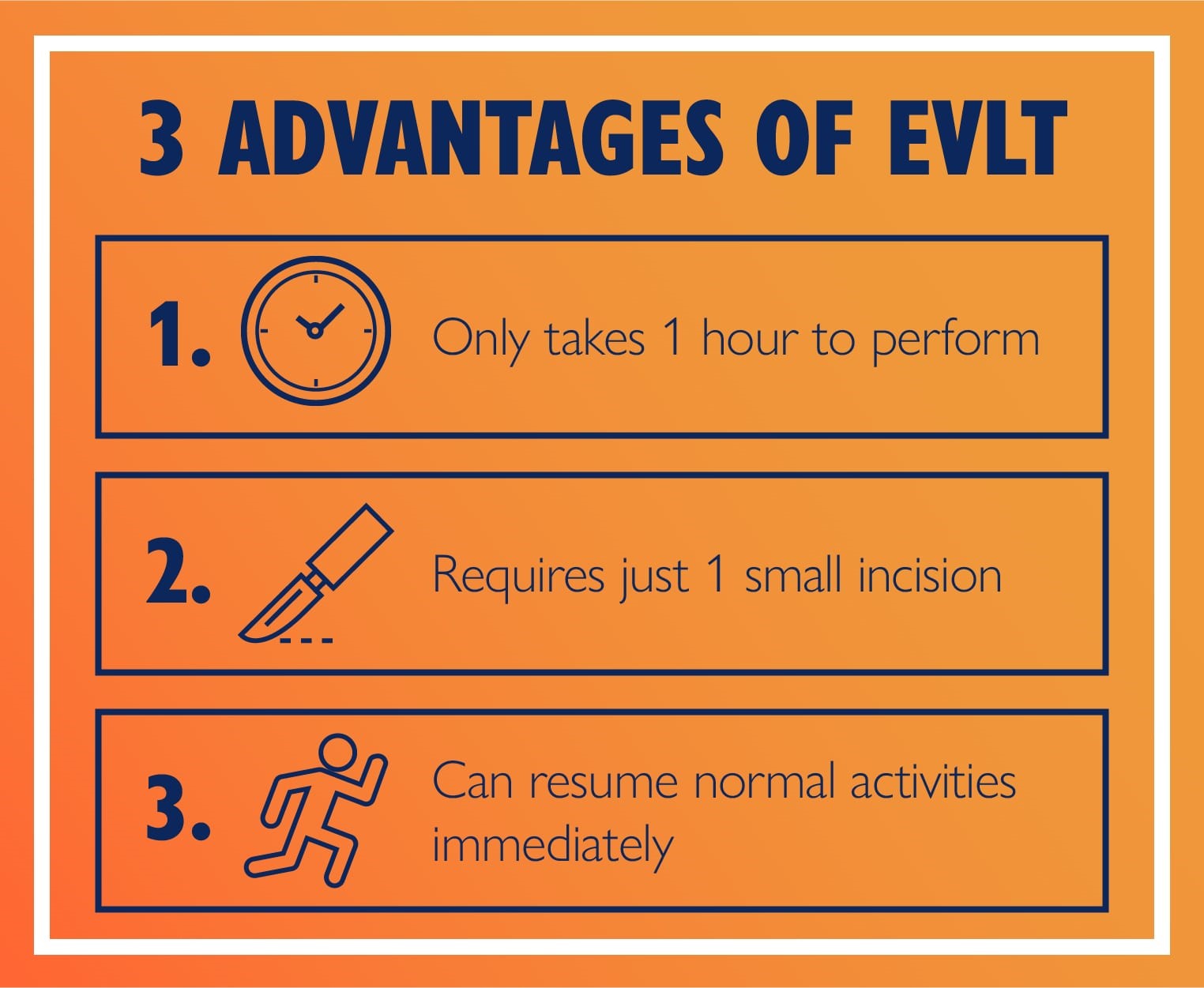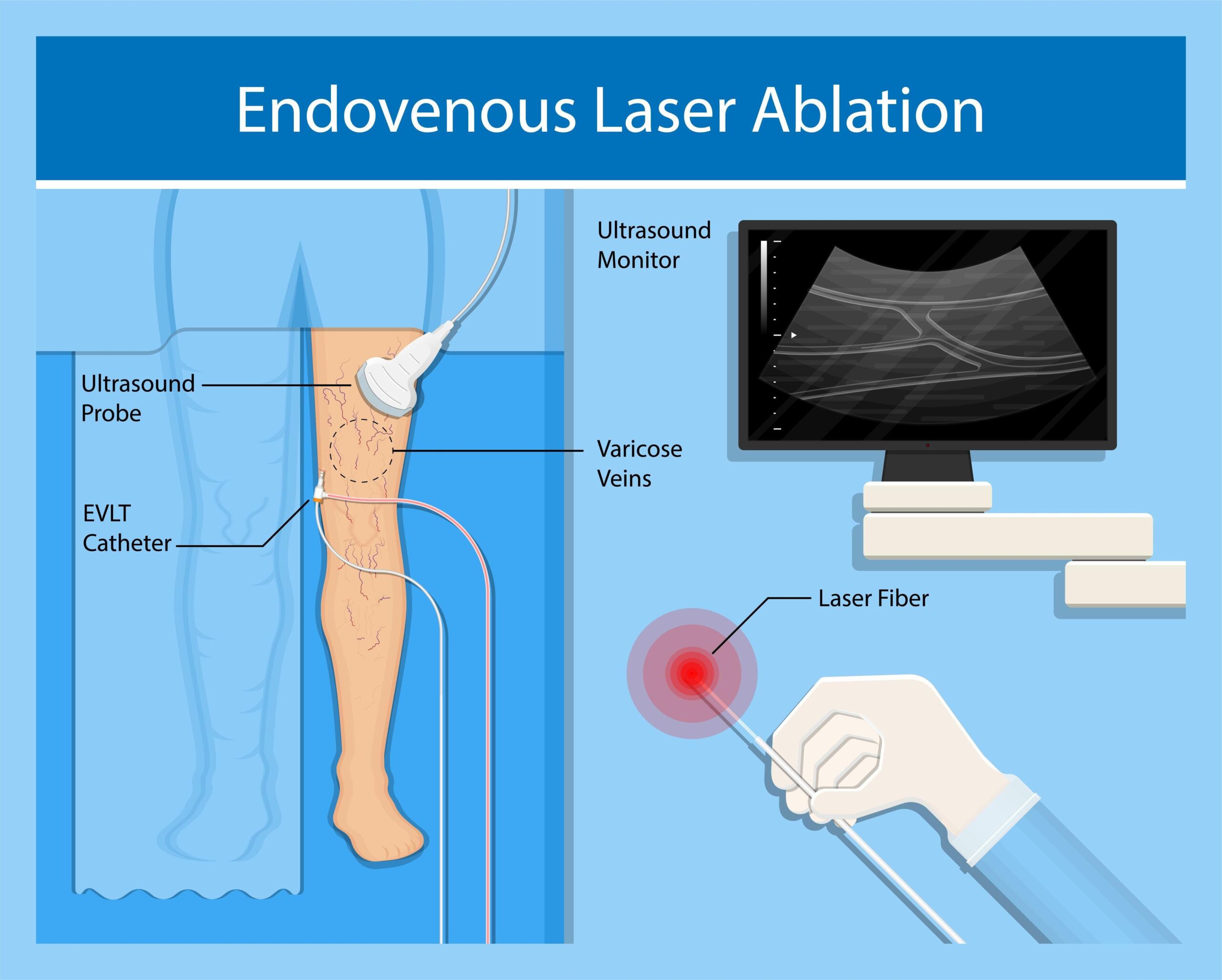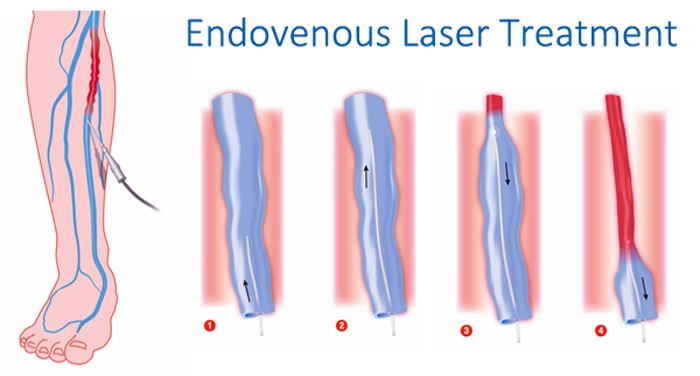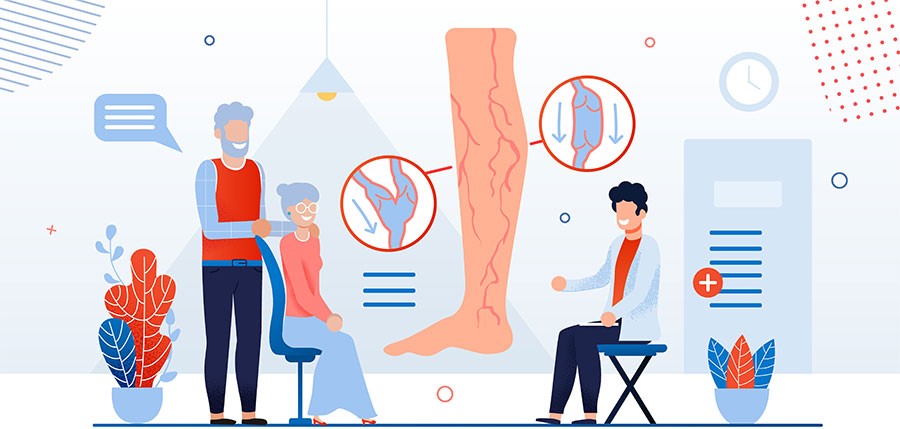EVLT uses a semiconductor laser to direct laser energy into varicose veins via optical fibers. The laser light is selectively absorbed by hemoglobin in the blood, generating a thermal effect that causes the vein wall to contract and collagen to denature. This ultimately damages the vascular endothelium and causes fibrosis, thereby closing the vein.
The specific process includes:
1. Laser energy absorption: Hemoglobin absorbs laser energy, generating heat that damages the venous lining.
2. Venous closure: The heat denatures the collagen in the venous wall, causing vessel constriction and adhesions, ultimately leading to fibrotic occlusion.
3. Postoperative absorption: The closed vein is gradually absorbed by the body, and blood flow is redirected to healthy veins.

Advantages of EVLT
1. Minimally Invasive
Requires only a 1-2mm puncture site, eliminating the need for extensive incisions and leaving virtually no scars.
It can be performed under local anesthesia, avoiding the risks of general anesthesia. It is particularly suitable for elderly patients or those with comorbidities such as hypertension and diabetes.
2. Quick Recovery
Quick return to normal life: Patient can resume exercise and work 1-2 weeks after surgery, and symptoms such as leg soreness and ulcers will be significantly improved
Compared with traditional stripping, it has less bleeding, less pain, and a lower incidence of complications such as infection and nerve damage.
3. Broad Indications
It can be completed under local anesthesia, avoiding the risks of general anesthesia. Even patients of advanced age or with comorbidities such as hypertension and diabetes can undergo this treatment.
No interference with pacemaker patients.
4. Cost-Effectiveness
Patients undergoing laser treatment for EVLT can shorten their hospital stay and reduce overall treatment costs.
Post‑EVLT Postoperative Care Recommendations
- Compression Garments
First 24–48 hours, patients should wear compression stockings continuously (day and night), removing only briefly for showering with waterproof protection.
Subsequent period (up to 5–7 days or longer): Continue wearing stockings during waking hours—typically for 1–3 weeks as per the provider’s instruction.
- Mobility & Activity
Encourage immediate ambulation post-procedure, aiming for 30 minutes per day, ideally as multiple short walks (e.g., several 10‑minute sessions).
Avoid strenuous activities, heavy lifting (>20 lbs), running, jumping, or high-impact exercise for approximately 1–2 weeks.
- Incision & Swelling Management
Apply ice packs for 10–20 minutes to the treated area to reduce swelling and discomfort.
Elevate the leg while sitting or resting to help reduce swelling.
- Pain Control
Over-the-counter NSAIDs like Ibuprofen (Motrin, Advil) are recommended immediately post-op to reduce inflammation and discomfort. If contraindicated or ineffective, Tylenol may be used.
- Water Exposure & Hygiene
Keep incision sites dry for at least 48 hours, avoid soaking in baths, pools, or hot tubs until wounds are fully healed (usually about one week).
- Follow-Up Imaging & Assessment
A follow-up ultrasound is typically scheduled within approximately one week to confirm vein closure and treatment success.
Routine duplex scans may not be necessary unless symptoms suggest a need for further evaluation.
- When to Contact Healthcare Provider
Advise patients to seek medical attention promptly if they encounter:
Signs of infection, such as increased redness, warmth, or discharge.
Worsening swelling, calf pain, or any severe symptoms limiting daily activities.

Treatment efficacy and recurrence
Treatment Results
Closure Rate:
The 1470nm laser achieves a 90-98% closure rate (within one year) due to the high absorption of the 1470nm wavelength by hemoglobin and water, concentrating the energy and minimizing damage to surrounding tissue.
Advantages:
Precision: The optical fiber directly impacts the vein wall, minimizing thermal damage.
Quick Recovery: Compared to traditional surgery (stripping), complications (infection, nerve damage) are fewer.
Aesthetics: Only a needle puncture is required, resulting in no noticeable scarring.
Recurrence Rate
The recurrence rate is approximately 5-20% within five years, depending on patient factors and technique:
Patient Factors: Obesity, prolonged standing, genetic predisposition, and untreated perforating or collateral veins.
Technical Factors: Inadequate laser energy setting, improper fiber placement, or insufficient postoperative compression.

FAQ:
- Typical surgical duration
The duration of an EVLT procedure generally ranges from 30 to 60 minutes, depending on the length of vein treated, the surgeon’s experience, and whether additional procedures (e.g., phlebectomy) are performed
Another source indicates that it usually lasts between 1 and 2 hours, and patients typically walk out under their own power immediately
- Differences between 980nm/1470nm/1940nm
980 nm laser: Primarily absorbed by hemoglobin; requires higher power and may cause more thermal spread.
1470 nm laser: Targets water absorption more effectively than hemoglobin, enabling effective vein ablation at lower power . It typically achieves good outcomes with LEED (linear endovenous energy density) under 100 J/cm
1940 nm laser: Even stronger absorption by water—about 4× that of 1470 nm and over 200× that of 980 nm
This allows effective closure using lower power, reducing ecchymosis, postoperative pain, and improving patient comfort.Clinical studies confirm 1940 nm EVLT is as safe and effective as 1470 nm, with 100% occlusion at 6 months and 96.5% at 24 months, lower postoperative pain scores (1.3 vs. 2.18), reduced bruising (2.2% vs. 3.2-18.7%), and similar rates of complications.
- How long after surgery can I walk?
Patients can typically walk immediately after the procedure and are discharged on the same day, usually within 4-8 hours of treatment
Ambulation is encouraged early, and patients are often advised to wear compression stockings (20-30 mmHg) for about two weeks during the day.

